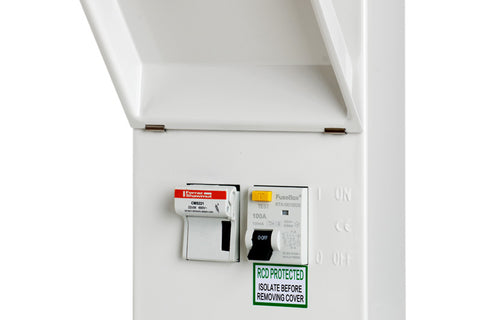Arc Fault Detection Devices (AFDD)
What is an AFDD?
An AFDD is a protective device installed inside a consumer unit to protect from arc faults. They use microprocessor technology to analyse the waveform of the electricity being used to detect any unusual signs of an arc on an electrical circuit. If the AFDD does detect an arc fault it will cut off power to the affected circuit and could prevent the outbreak of a fire.
Since the release of the 18th edition regulations in 2018, Arc Fault Detection Devices has been a huge talking point. Do you have to install an AFDD? Until now the answer has been they are only recommended but a necessity.
This has now been clarified with the release of Amendment 2 BS 7671:2018+A2:2022 Regulation 421.1.7.
The use of AFDDs is now mandatory for any single phase AC final circuits supplying socket outlets in certain types of buildings i.e.
- In Higher Risk Residential Buildings (HRRB)
- In Houses in Multiple Occupation (HMO)
- In Purpose Built Student Accommodation
- In Care Homes
Arc Fault Detection Devices are recommended for single phase AC final circuits supplying 32A socket outlets in all other instances.

What is an Arc Fault?
We now know what the AFDD is but what actually is an arc fault? An Arc fault happens when an electrical current jumps between two conductive materials.
The two main types of Arc Fault; are Series Arc Fault and Parallel Arc Fault. The most common causes of arcs include worn contacts in electrical equipment, breaks in cables, and loose connections.
Why do Arc Faults Occur?
- Kinks or breaks in a cable
- Cable wear due to frequent use
- Damaged cables as a result of drilling during construction or DIY projects
- Incorrectly stripped wires
- Incorrect bonding
- Lose connections in plug top
- Defective plugs
- Rodent bites

What is the purpose of Arc Fault Protection?
AFDDs have been designed to reduce the risk of igniting an electrical fire in cables and equipment which will then provide an additional level of protection to your home.
Electrical fires can occur for a number of reasons;
- Short-circuit and Overloads
- Earth Leakage Currents
- Overvoltage
- Dangerous Electric Arcs
Different Types of Electrical Arc?
Series Arc Fault Current - These occur due to damaged (crushed/broken) cables and loose connections.
Parallel arc fault current (Live-Neutral) - Parallel arc fault current occurs when there is a fault between the live and neutral (L-N).
Parallel arc fault current (Live-Earth) - Parallel arc faults occur when the is a fault between the live and earth (L-E)

See our range of AFDD's here!











